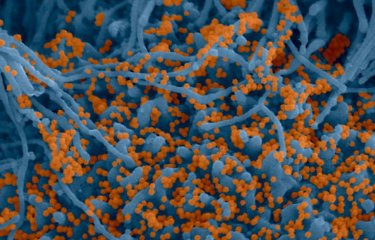-
Article | 2020.07.27
Our Organization
The Technology Transfer and Industrial Partnership Department is responsible for the Institut Pasteur’s fourth mission – innovation development and technology transfer. Its role is to support the entire innovation process: identification of potential applications, protection, innovation development, promotion, transfer, and post-contract management. The aim is to bring medical solutions and...
-
Page avancée | 2020.07.27
Investor Partnerships
Are you an investor? We provide a means for you to be involved throughout the whole value chain. You can help our researchers to develop their inventions during the acceleration and maturation phases of their projects or upstream of the creation of startups.
-
Document de presse | 2020.07.27
Malaria: parasite resistance to artemisinin derivatives now affecting Africa
Resistance to artemisinin, the main component of the current antimalarial treatments recommended by WHO, is already widespread in South-East Asia, but it had not previously been described in Africa. Scientists from the Institut Pasteur, in collaboration with the National Malaria Control Program in Rwanda (Rwanda Biomedical Center), the World Health Organization (WHO), Cochin Hospital and Columbia...
-
News | 2020.07.20
i-Lab 2020 competition: two winners from the Institut Pasteur, one awarded a Grand Prix
On July 16, the i-Lab 2020 innovation competition unveiled the names of 73 winners, which this year included the D4Zin (Grand Prix) and AVATAR MEDICAL projects, both based on research carried out at the Institut Pasteur and supported by the Pasteur Microbes and Health Carnot Institute.Sponsored by the French Ministry of Higher Education, Research and Innovation and organized in partnership with...
-
Document de presse | 2020.08.12
The behaviour of therapeutic antibodies in immunotherapy
Since the late 1990s, immunotherapy has been the frontline treatment against lymphomas where synthetic antibodies are used to stop the proliferation of cancerous white blood cells. However, in the more than 20 years since their use began, the molecular mechanisms that underlie this therapy are still little understood. For the first time, scientists from the CNRS, Institut Pasteur and Université...
-
Article | 2020.08.20
Industrial property
The Institut Pasteur is in the world's top 10 list for US and European patents granted in the field of life sciences for the period 2010-2014.
-
Article | 2020.08.20
Licensing opportunities
Available TechnologiesIf you are interested in currently available technologies from the Institut Pasteur in 4 main categories (Diagnostic, Therapeutics, Vaccines and Technology), please contact the Business Development teamContact us
-
Article | 2020.08.20
R&D collaborations
The combination of our scientific expertise and industrial awareness will enable you to identify innovative solutions to meet your challenges.
-
Article | 2020.08.20
Other contracts
By partnering with the Institut Pasteur, you benefit from access to science, knowledge, skills and cutting-edge infrastructures.
-
Article | 2020.08.20
Post-contract Management
In order to address the challenges of product development costs associated with the high failure rate of development collaborations, the Industrial Agreements Office builds trustworthy, long-term relationships with industrial partners in full transparency.


